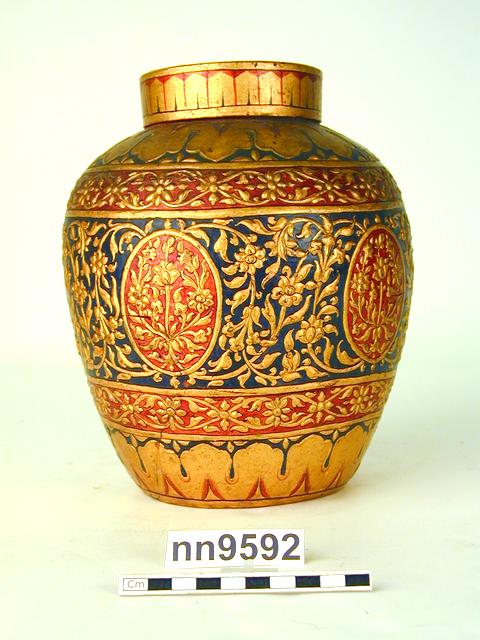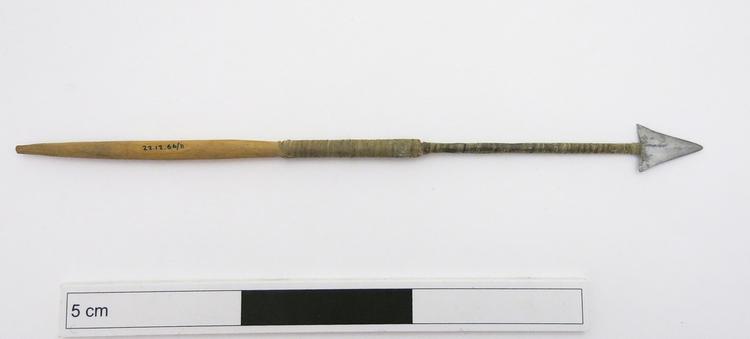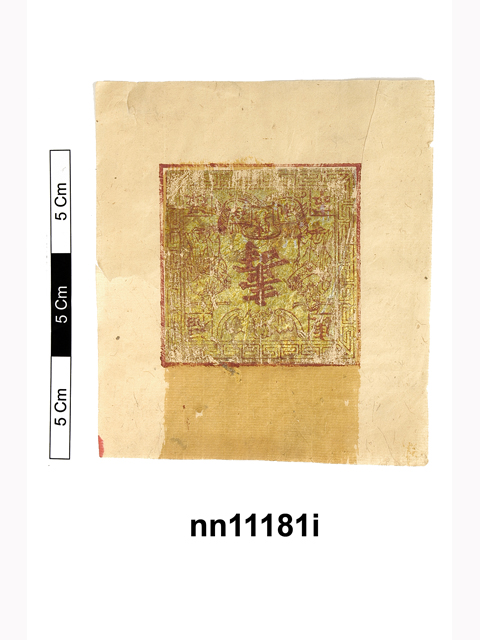
Arrow or spear with bamboo shaft and wooden head attached with braided vegetable fibre. Head is decorated with carving infilled with white pigment (probably lime) at bottom with a line of c.21 carved, integral barbs along one side tapering to concial tip. Raised ridge around bottom of tip section.
Arrow, Fly River Delta, Gulf Province, Papua New Guinea For the peoples of the lower Fly River, arrows were historically a major export commodity, and helped to ease the difficulties of the challenging environment in which they live by enabling them to import valuable stone from the Torres Strait Islands. The refinement of these arrows perhaps gives them a deceptively simple appearance, but they are finely made objects. They follow the standard pattern of New Guinea arrows, being constructed from two pieces. Their delicately tapering heads of hardwood are engraved in a restrained manner, and then very skilfully blackened with candlenut soot. This head is tightly socketed into the very light shaft of hollow Miscanthus stem, which gives the arrow a front-heavy balance: the Gulf arrow-maker knew that this would give the arrow greater resistance to the turbulence building up around the arrow’s head as it cut through the air. Wood, cane. Late 19th Century. Purchased in London by Frederick Horniman before 1898.
fighting






